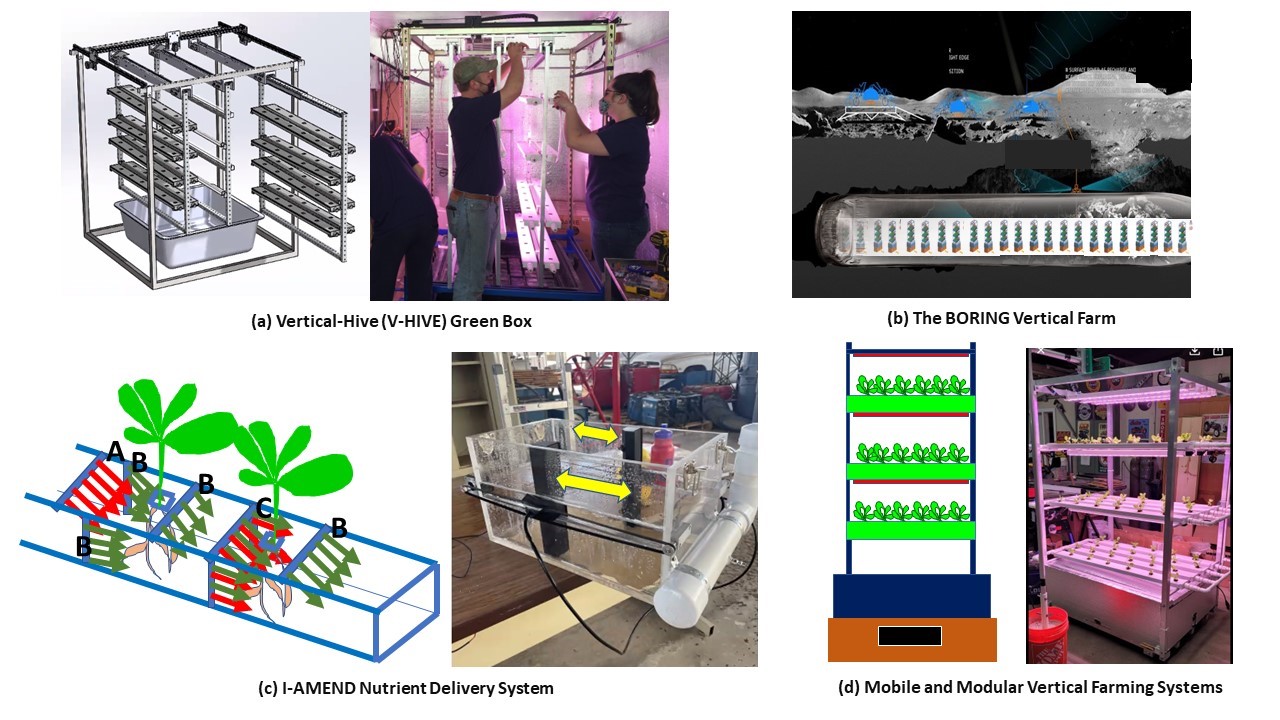6.3 Urban and Peri-Urban Vertical Farming
By Joel L. Cuello, Professor, Department of Biosystems Engineering, University of Arizona
Current research and engineering innovations for a potential vertical-farming industry in southern Arizona to be linked with external bioeconomy nodes to achieve circularity.
To meet the food demand of a global population that will increase from today's approximately 8 billion to about 9.7 billion, the United Nations projects that food production will need to increase by 70%, necessitating a doubling in crop production from 10 billion tons to 20 billion tons by 2050 (FAO, 2009; Ray and Schaffer, 2011). Given that agriculture already makes use of about half of all habitable land on the planet, consumes over 70% of all current freshwater withdrawals worldwide, and expends 30% of the global energy demand to food production and its supply chain, it is clear that a doubling of crop production will put enormous pressures on land, water and energy resources worldwide, particularly in arid and semiarid regions of the world (Cuello, 2018).
People are drawn to live in cities because cities constitute the world's undisputed economic engine. Just 600 cities today account for about 60% of the global economic output (Dobbs et al., 2011). By 2025, the world's top 600 cities will be home to an estimated 220 million more people of working age and will account for more than 30% of the expansion of the potential global workforce (Dobbs et al., 2011).
An affirmative stance for urban agriculture is in part supported by the argument that cities, with their infrastructures and centralized planning for supplying water and energy as well as for treating and reusing wastewater and even generating renewable energy, lend themselves well to organized and potentially more efficient utilization of water and energy for crop production.

Figure 1.The University of Arizona Biosystems Engineering Laboratory portfolio of patented/patent-pending originally designed scalable and automated vertical-farming growing systems and nutrient-delivery systems for scaled-up vertical farming of vegetables, fruit berries, herbs and microgreens, among others.
Urban agriculture takes on several forms including establishing community gardens on vacant lots and, more recently, rooftop greenhouses. Vertical farming constitutes another form of urban agriculture in which the crops are produced in vertically stacked growing shelves or trays in an enclosed environment (Cuello, 2014). There are two paradigms of vertical farms: (1) the warehouse vertical farm; and (2) the modular vertical farm. Warehouse vertical farms, also referred to as plant factories as pioneered in Japan, typically employ hydroponics technology, or soil-less agriculture, through which crops are grown in liquid nutrient solutions. The crops are also provided either exclusive or supplemental electric lighting typically using light-emitting diodes (LEDs). Japanese-designed vertical farms have always focused on developing controlled-environment hydroponic technologies that enable intensive crop production with significantly increased yield (2x or 3x), at significantly reduced water input (about 80% to 90% less), and with reduced land footprint without the need for arable land as compared with open-field farming.
The University of Arizona Biosystems Engineering Laboratory in the Department of Biosystems Engineering has been building a growing portfolio of patented/patent-pending originally designed scalable and automated vertical-farming growing systems and nutrient-delivery systems (Figure 1) for the scaled-up vertical farming of vegetables, fruit berries, herbs and microgreens, among others.
Table 1. Urban/Peri-urban vertical farming for scaled-up production of vegetables, fruit berries, herbs and microgreens, among others
Southern Arizona represents a competitive location for the establishment of an urban/peri-urban vertical-farming industry owing to the availability and relatively low cost of land as well as its year-round abundance of solar radiation, among others. Table 1 shows how an urban/peri-urban vertical-farming industry in southern Arizona could be linked with external bioeconomy nodes to achieve circularity. Potential input feed could come from external industry nodes, including electric power plants, greenhouses, open-field agriculture, aquaculture operations, and food and beverage manufacturing facilities, among others.












